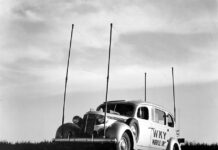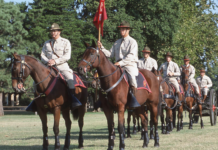The Oklahoma Panhandle may very well have been one of the last vestiges of the Wild West. The area, a strip of land bordering Texas, Kansas, New Mexico and Colorado, remained unclaimed, officially at least, until 1890. This meant that the rules were made, broken and enforced by the residents living there at the time. And, due to popular cattle trails through the area, there were a lot of people passing through, and, eventually, some who chose to stay.
It should be noted that this part of the country was long inhabited and traversed by Indigenous people. Different groups moved in and out through the millennia, but by the 18th century, the area was controlled by the Comanches, with influences from the Kiowas, Kiowa-Apache, Cheyennes and Utes. The Red River War, started in 1874, led to the forced removal of these tribes into southwestern Indian Territory.
“There would have been a lot of people going back and forth across [the area], on cattle trails, but there weren’t really any permanent European settlements,” says J. Seth Hammond, curator of the No Man’s Land Museum, part of the No Man’s Land Historical Society.
To begin to understand why the boundaries ended up where they did, you’d have to go all the way back to just after the colonial era in 1819 and the Adams-Onis Treaty, says Hammond. This drew the far western border at the 100° longitude line with the delineation of the U.S. and New Spain borders.
In 1850, Texas ceded a large amount of land to the U.S. government and the southern boundary of the future panhandle was drawn at 36°, 30 minutes N latitude. This was because the Missouri Compromise of 1820 prohibited slave-holding states or territories – which Texas was – north of this point. And the southern border of Kansas was drawn at 37°N in an attempt to not encroach upon Cherokee Outlet land, and due to the existence of slave-holding plantations in the area. This left a “strip” of federal public land.
“So you start to see that by this time, the early 1860s, there is this area of territory out here that no one has really claimed,” says Hammond. “As other states and territories were drawing their boundaries, what is now the Oklahoma Panhandle just kept getting left out.”
Towns, such as Beaver, Hardesty and Optima, began to crop up in the area in the late 1880s, many of them along known cattle trails, says Hammond. But no one could technically own the land, so the term No Man’s Land came into use in the 1880s.
There were attempts to get the area recognized as its own territory – Cimarron Territory, says Hammond. But there never were enough people or interest to make that happen. And by 1890, with the passage of the Organic Act, the panhandle officially became a part of Oklahoma territory.
























